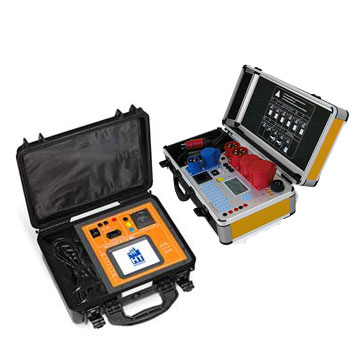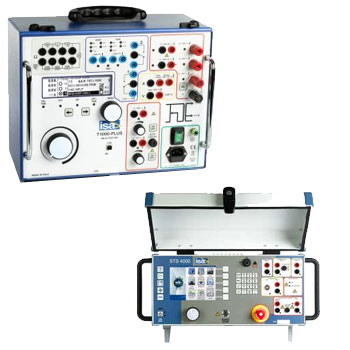
Photovoltaic systems should do their job for decades. Unfortunately, the aging process leads to various defects and even partial failures. Many of these defects can be traced back to the boom times of solar systems. Less qualified personnel on duty led to consequences that can still be felt today - from insufficient solar yields and processing errors to safety and fire risks. But a lightning strike can also cause defects. Thermal imaging cameras are used to detect irregularities quickly and easily. Thermal imaging cameras quickly locate thermal abnormalities so they can be resolved.
Inspection of a photovoltaic system
Photovoltaic systems are checked easily, quickly and efficiently using thermal imaging cameras. During operation, thermal irregularities are identified that indicate defects.
It is important that the solar system is in operation and converts solar energy, otherwise the individual modules will not heat up. The guide value is 50% of the nominal power.
Normal findings
Benign irregularities are called normal findings. There are white spots on the thermal imaging camera display. These are screw connections, basic structures of the system and also connection boxes (usually connected to the back of the system). Normal findings should be ignored in the analysis.
Hot spots and defects
Hot spots and defects are detected through the thermal imager's ability to sense temperature differences. A thermal sensitivity of 100 mK is sufficient for this. The thermal sensitivity describes the smallest temperature difference that can be perceived with the camera.
There will always be some minor thermal differences. However, as soon as larger differences are visible, deviations of 2 K, the said point should be examined more closely.
In the case of defects, the total resistance of the cell sometimes increases. The cells are placed in series to output a high voltage. As a result, the same current flows through all cells. In the defective cell, the increased resistance leads to heating, making the defect clearly visible on the thermal imaging camera.
Defects can also be caused by lightning. The bypass iodes are destroyed in the process. They are visible on the IR images due to strong heating.
Hot spots indicate hot spots in the silicon semiconductor. They become punctiform, in the "measles" pattern, visible on the thermal imaging camera.
Handling of the device
For the simple thermal requirement of an inspection of photovoltaic or solar modules, one can disregard the sometimes high range of functions of the thermal imaging cameras.
It is important that the emission coefficient is set on the thermal imaging camera and adapted to the object to be examined. This describes how much heat an object emits compared to a black body (idealized material that perfectly absorbs and reflects heat).
The FOV (field of view) plays an equally important role. It describes the section that a camera can record from its surroundings. Devices that have a small FOV are more suitable for small objects with large distances and vice versa.
Purchasing a thermal imaging camera
When buying a thermal imaging camera, make sure that you have a large field of view. This allows you to control large modules at close range. The camera also has to cover a high temperature range. In addition, a high sensor resolution is essential for testing photovoltaic and solar systems. In comparison to damaged insulation in the house, detail is required for the electronics - it should have a minimum resolution of 300 x 200 pixels.
- IR resolution: 256 x 192 (49,152 pixels), 2MP Visual Resolution
- Support SuperIR image enhancement technology
- NETD : < 40 mK (@ 25°C, F#=1.0)
- Temperature measurement range: -20°C to 550°C (-4°F to 1022°F)
- Accuracy: Max (±2°C/3.6°F, ±2%), for ambient temperature 15°C to 35°C (59°F to 95°F) and object temperature above 0°C (32°F)
- Measurement presets: Center spot, Hot spot, Cold spot, User Preset Point
- 25 Hz image frequency
- 3.2" 480 × 640 Resolution LCD Screen
- Up to 6 hours continuous running
 Datasheet Datasheet |
 User Manual User Manual |
- ATEX: II 3 G Ex ic IIC T6 Gc, II 3 D Ex ic IIIC T85°C Dc
- IECEx: Ex ic IIC T6 Gc, Ex ic IIIC T85°C Dc
- Thermal resolution: 256 × 192 (49,152 pixels)
- Temperature measurement range: -20°C to 550°C (-4°F to 1022°F)
- Image frequency: 25 Hz
- Display: 3.2'' LCD screen
- Continuous running time of up to 6 hours

 Datasheet Datasheet
|
 Flyer Flyer
|
 User Manual User Manual
|
- Thermal resolution: 96 × 96 (9,216 pixels)
- Distance to spot ratio (D:S): 112:1
- SuperIR: 240 × 240 (57,600 pixels)
- NETD: < 50 mK (@ 25°C, F# = 1.0)
- Measurement presets: center spot, hot spot, cold spot, off
- Image frequency: 25 Hz
- Laser pointer
- Built-in 4 GB flash memory: 30,000 pictures
- Up to 8 hours continuous running
- Thermal/Visual/Fusion
 Datasheet Datasheet
|
 Flyer Flyer
|
 User Manual User Manual
|
- Thermal resolution: 96 × 96 (9,216 pixels)
- Distance to spot ratio (D:S): 112:1
- SuperIR: 240 × 240 (57,600 pixels)
- NETD: < 50 mK (@ 25°C, F# = 1.0)
- Measurement presets: center spot, hot spot, cold spot, off
- Image frequency: 25 Hz
- Laser pointer
- Built-in 4 GB flash memory: 30,000 pictures
- Up to 8 hours continuous running
 Datasheet Datasheet |
 Flyer Flyer |
 User Manual User Manual |
- Thermal resolution: 480 × 360 (172,800 pixels), NETD: < 30 mK (@ 25 °C, F#=1.0)
- Temperature measurement range: -40°C to 2200°C (-40°F to 3992°F)
- Accuracy: Max. (±1°C (±1.8°F): 0 to 100°C (32 to 212°F); ±1%: 100 to 150°C (212 to 302°F))
- The 90° rotating screen and the 180° rotating lens design
- 1.x to 12.x continuous digital zoom
- Manual, automatic, and 1-Tap Level and Span
- 30 Hz image frequency
- Up to 4 hours continuous running
 Datasheet Datasheet |
 Flyer Flyer |
 User Manual User Manual |
- Thermal resolution: 480 × 360 (172,800 pixels), NETD: < 30 mK (@ 25 °C,F#=1.0)
- Temperature measurement range: -20 °C to 650 °C (-4 °F to 1202 °F)
- Accuracy: Max (±2°C/3.6°F, ±2%)
- The 90° rotating screen and the 180° rotating lens design
- 1.x to 12.x continuous digital zoom
- Manual, automatic, and 1-Tap Level and Span
- 30 Hz image frequency
- Up to 4 hours continuous running
 Datasheet Datasheet |
 Flyer Flyer |
 User Manual User Manual |
- Thermal resolution: 640 x 480 (307,200 pixels), NETD: < 35 mK (@ 25 °C, F#=1.0)
- Temperature measurement range: -20 °C to 2000 °C (-4 °F to 3632 °F)
- Accuracy: Max (±2°C/3.6°F, ±2%)
- 1.x to 8.x continuous digital zoom
- Manual, automatic, and 1-Tap Level and Span
- GPS & compass annotation functions
- Long-distance laser light supplement for thermography targets
- LED light supplement provides light in dark scenarios
 Datasheet Datasheet |
 Flyer Flyer |
 User Manual User Manual |
- Thermal resolution: 640 x 480 (307,200 pixels), NETD: < 35 mK (@ 25 °C, F#=1.0)
- Temperature measurement range: -20 °C to 2000 °C (-4 °F to 3632 °F)
- Accuracy: Max (±2°C/3.6°F, ±2%)
- 1.x to 8.x continuous digital zoom
- Manual, automatic, and 1-Tap Level and Span
- GPS & compass annotation functions
- Long-distance laser light supplement for thermography targets
- LED light supplement provides light in dark scenarios
 Datasheet Datasheet |
 Flyer Flyer |
 User Manual User Manual |
- Thermal resolution: 480 x 360 (172,800 pixels), NETD: < 35 mK (@ 25 °C, F#=1.0)
- Temperature measurement range: -20 °C to 2000 °C (-4 °F to 3632 °F)
- Accuracy: Max (±2°C/3.6°F, ±2%)
- 1.x to 8.x continuous digital zoom
- Manual, automatic, and 1-Tap Level and Span
- GPS & compass annotation functions
- Long-distance laser light supplement for thermography targets
- LED light supplement provides light in dark scenarios
 Datasheet Datasheet |
 Flyer Flyer |
 User Manual User Manual |
- Thermal resolution: 480 x 360 (172,800 pixels), NETD: < 35 mK (@ 25 °C, F#=1.0)
- Temperature measurement range: -20 °C to 650 °C (-4 °F to 1202 °F)
- Accuracy: Max (±2°C/3.6°F, ±2%)
- 1.x to 8.x continuous digital zoom
- Manual, automatic, and 1-Tap Level and Span
- GPS & compass annotation functions
- Long-distance laser light supplement for thermography targets
- LED light supplement provides light in dark scenarios
 Datasheet Datasheet |
 Flyer Flyer |
 User manual User manual |
- Thermal resolution: 384 x 288 (110,592 pixels), NETD: < 35 mK (@ 25 °C, F#=1.0)
- Temperature measurement range: -20 °C to 650 °C (-4 °F to 1202 °F)
- Accuracy: Max (±2°C/3.6°F, ±2%)
- 1.x to 8.x continuous digital zoom
- Manual, automatic, and 1-Tap Level and Span
- GPS & compass annotation functions
- Long-distance laser light supplement for thermography targets
- LED light supplement provides light in dark scenarios
 Datasheet Datasheet
|
 Flyer Flyer
|
 User Manual User Manual
|
- High sensitivity thermal module with 640 x 480 resolution
- SuperIR up to 1280 x 960 (1,228,800 pixels)
- Supports multiple palettes
- High quality optical module with 8 MP resolution
- Bi-spectrum image fusion, picture-in-picture preview
- Wide temperature measurement range: -20 - 650°C
- High temperature measurement accuracy: Max. (± 2°C/3.6°F, ± 2%), for ambient temperature 15°C to 35°C (59°F to 95°F) and object temperature above 0°C (32°F)
- 640 x 480 resolution 3.5'' LCD touch display
- Long-distance laser light supplement for thermography targets
- LED light supplement makes the device a torch in required scenarios
- 1.0x to 8.0x continuous digital zoom
- Supports remote album access, download and quick report with APP
 Datasheet Datasheet |
 Flyer Flyer
|
 User Manual User Manual |






















































































































































































